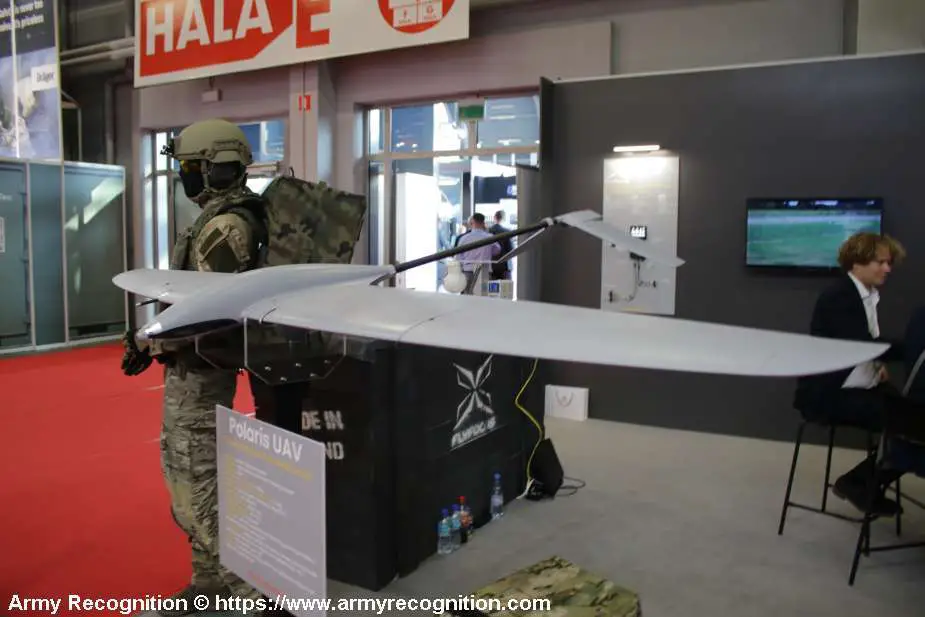Breaking news
MSPO 2023: Polaris introduces advanced UAV with thermal AI for extended flight capabilities.
At the MSPO 2023 International Defence Industry Exhibition, Polaris unveils, an unmanned aerial vehicle (UAV) designed for long-term, quiet operations. The aircraft is not only smaller and lighter but also more cost-effective than existing solutions. It comes with a range of features that make it highly versatile, including the ability to carry various payloads and a unique "Thermal AI" algorithm for extended flight time.
Follow Army Recognition on Google News at this link

Polaris UAV lands on its back at a 45-degree angle using flaps and reverse thrust. (Picture source: Army Recognition )
Polaris UAV is constructed from carbon-glass composite materials, making it both lightweight and durable. It's powered by a silent electric motor with a folding propeller, allowing for discreet operations. With a wingspan of 2.2 meters and a maximum takeoff weight of just 4.5 kg, the UAV can easily fit into a small backpack weighing between 8-14 kg.
One of the standout features of Polaris is its proprietary "Thermal AI" algorithm. This technology enables the UAV to locate and utilize thermal updrafts, thereby increasing its engine-free flight time. With this algorithm, Polaris can achieve a flight time of up to four hours.
The UAV has a speed range of 45-110 km/h and can operate at a maximum altitude of 4,000 meters above sea level. It's designed to function in a wide temperature range, from -20 to +50 degrees Celsius, making it adaptable to various operational environments.
Polaris can be prepared for flight in just five minutes and is hand-launched at a 45-degree angle, eliminating the need for any ground infrastructure. Its navigation system includes GPS+INS, with additional anti-jamming systems or the option for missions without GPS.
The UAV can carry a variety of payloads, including electro-optical/infrared (EO/IR) sensors, mapping cameras, communication relays, and radio-electronic warfare (SIGINT) equipment. The EO/IR payload features a daytime camera with 40X zoom and a thermal camera with a resolution of 640x480. Additional payload features include object tracking, recognition, target geolocation, and "fly by camera" capabilities.
Polaris employs a unique landing approach to protect its valuable payload. The aircraft lands on its back at a 45-degree angle using flaps and reverse thrust. This inverted belly landing technique allows for a 10-50 glide slope.


























